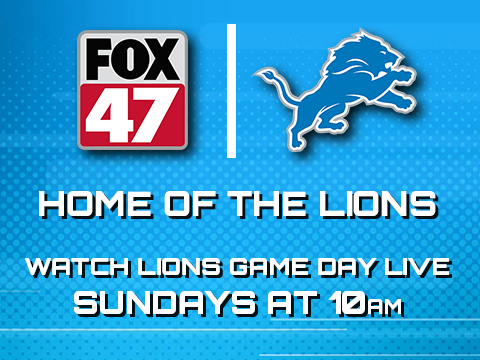LANSING, Mich. — Having open heart surgery can be one of the most intimidating things some people will ever face, but at McLaren Greater Lansing, patients come out of their procedure with a lasting reminder of their own strength, and their surgeon’s talent.
For more than 25 years, McLaren Greater Lansing Cardiothoracic Surgeon Divyakant Gandhi, MD, FACS, FRCS, has made his mark on patient care by taking the time to draw out exactly what he did during every patient’s surgery on a heart-shaped pillow. “As soon as I finish an operation, our staff puts the pillow on the table in the ICU for me,” said Dr. Gandhi. “I write the name of the patient, the date of the procedure, and then I draw exactly what I did.”
It takes Dr. Gandhi a little more than five minutes to write the patient’s name, draw out their procedure, and sign and date each heart pillow. That might not seem like much time, but over an entire year, it can add up to more than 50 hours of just filling out pillows after surgeries.
Despite that, Dr. Gandhi says working on the pillows is worth every minute. “The pillow helps a patient’s recovery process,” said Dr. Gandhi. “Some people put it on a mantelpiece as a reminder of what they underwent, or to help remind them to change their lifestyle, diet, or to stop smoking.”
The markings on each heart pillow are as unique as the patient who takes it home. Jim Miner received his pillow from Dr. Gandhi after a triple-bypass surgery, and his sons were able to see the details of their dad’s surgery as soon as it was completed. “Dr. Gandhi sat down and showed us the pillow to explain where the blockages were, which would be hard to understand from just a drawing,” said Jim’s son Paul Miner. “For people who learn by visuals, this is the way to do it.”
The markings on each heart pillow are as unique as the patient who takes it home. Jim Miner received his pillow from Dr. Gandhi after a triple-bypass surgery, and his sons were able to see the details of their dad’s surgery as soon as it was completed. “Dr. Gandhi sat down and showed us the pillow to explain where the blockages were, which would be hard to understand from just a drawing,” said Jim’s son Paul Miner. “For people who learn by visuals, this is the way to do it.”
“The picture on the pillow is fantastic,” said Dr. Gandhi. “It has all the arteries and valves, so I don’t have to paint a picture in a patient’s mind to show them exactly what I did.”
The heart pillows are more than just a way to show a patient what their surgery entailed. Many patients hold the pillow close to their heart to help with their rehabilitation process. “Patients have to take precautions with their chests after open heart surgery,” said Suzanne Jager, PA-C at McLaren Greater Lansing Cardiothoracic and Vascular Surgeons. “Holding the pillow to their chest helps teach patients how to get up with just their core and legs and not push themselves up.”
While some people consider the heart pillow a trophy, others continue to use it at home while they heal from their surgery. “I plan to use my pillow,” said Jim Miner. “It’s good in two ways: It forces you not to use your arms, and it captures your breast bone when you hold it.”
Many patients leave with more than just Dr. Gandhi’s signature on their pillow after experiencing the compassionate care from their entire team. “A lot of patients will have the staff sign their pillow,” said Jager. “They’ll get an autograph from their night nurse, or other people who they become really close to while they’re here. It adds to their whole experience.”
Dr. Gandhi has given out thousands of heart pillows over the past 25 years, but the experience of giving it to a patient and their family never loses its specialness. “It’s known as ‘Gandhi’s pillow,’” said Dr. Gandhi. “I get a lot of hugs when I give them out.”

